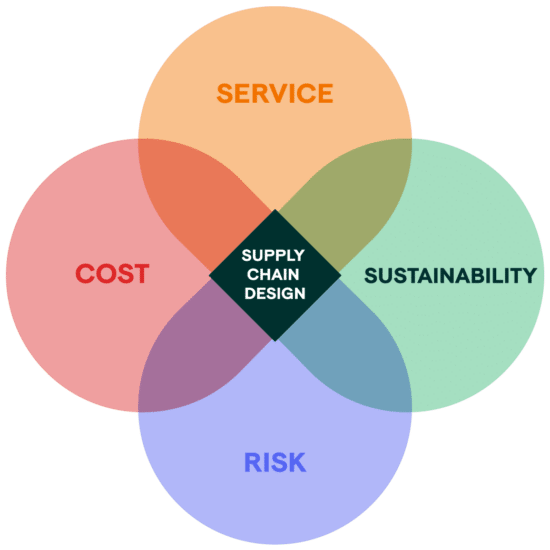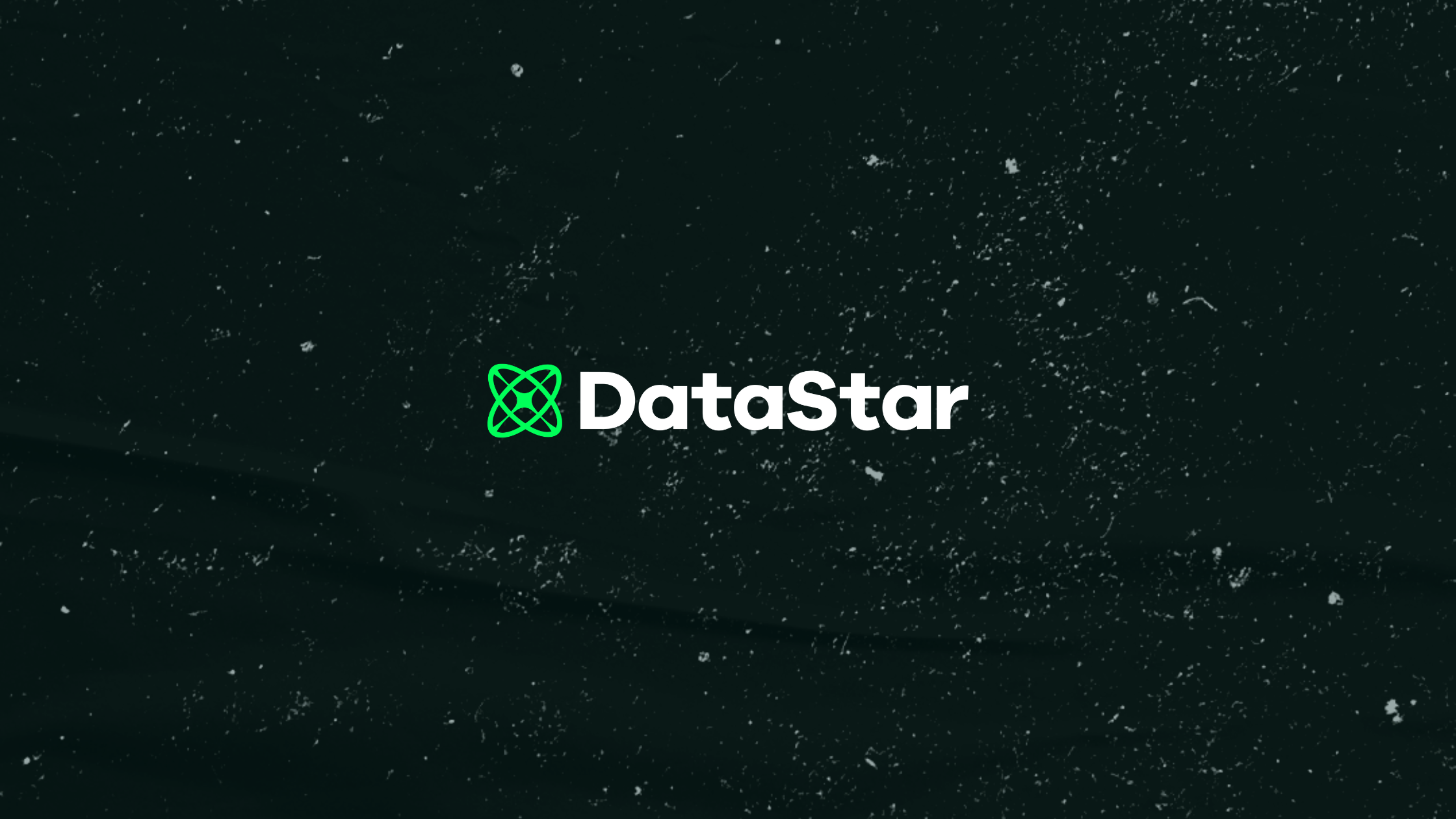
Explore how taxes and duties influence supply chain design, affecting not only cost but also service levels and risk. Understand the intricate ways in which different tax regimes can shape logistical decisions and overall supply chain efficiency. Learn effective strategies for integrating tax considerations into your planning processes to optimize performance and enhance profitability.
Published by
Published on
November 25, 2024





By Ricardo Taborda dos Reis, Managing Partner at 7D Analytics
Supply chain design is about creating a balanced, sustainable, and profitable supply chain. To achieve this, it’s essential to consider all factors, including often-overlooked taxes and duties. These can significantly influence where and when you operate.
Supply chain design is the process of creating digital models of your future-state supply chain to accurately predict the performance of each design in terms of service, financials, and risk.
Designing and redesigning the supply chain requires deciding what’s most important: the designer must weigh the trade-offs across financials, service, risk, and sustainability and decide which design will best support the enterprise’s long-term objectives.
Supply chain design can explore every type of decision regarding the structure and policies of your supply chain, including taxes and duties.

Cost and service considerations often dictate supply chain network design. However, these are not the only factors organizations need to consider in their supply chain design.
More countries are imposing taxes and duties on products to protect local industries. These changes affect trade today, and they will shape the future of supply chain design:
Effective network optimization encompasses the strategic consideration of tax impacts. Instead of creating a model that optimizes costs or service and subsequently calculates tax implications, integrate tax optimization from the outset.
By doing so, you not only seize the chance to enhance tax efficiency but also protect your resources. Incorporating tax benefits and other tax impacts directly into the optimization model allows you to fully explore the opportunities and trade-offs between taxes and logistical costs.
To fully leverage available tax benefits, it’s crucial to understand their distinctions. Some benefits pertain solely to cash flow, while others affect operational outcomes.
Prioritize modeling operational results and assessing the impact of various tax benefits while conducting a thorough analysis of your cash flow. This approach ensures you harness every advantage for optimal financial performance.
Companies must understand the difference between benefits that affect operational activities and decisions and tax benefits that primarily impact financials.
For instance, your business revenue will be taxed; if your sales increase, so will your taxes. Some taxes (and tax benefits) influence only your financial outcomes. While these tax benefits can significantly impact your organization’s bottom line, they don’t affect how you design your supply chain.
In other cases, tax impacts are relevant for operational decisions. You might optimize your tax benefits by operating at a specific distribution center or between two countries. It is crucial to distinguish between these types of tax impacts and understand their potential effects on your overall revenue.
Most tax impacts have a specific duration window. To make informed network design choices, it’s essential to thoroughly evaluate whether you’ll achieve a return on investment in a particular industry, within a specific country, and during a defined time window.
Once you have a clear understanding of these elements, you can then make strategic decisions about your network design. This might include selecting optimal locations for distribution centers, determining the best countries for operations, and timing your market entry to maximize tax benefits.
Every potential decision carries inherent risks and rewards regarding tax impacts. As you optimize your supply chain design, it’s crucial for your organization to weigh the possible risks of acting on a tax benefit, fully aware that it could be revoked by a new government policy at any moment.
For example, if you base operational decisions, such as the placement of a distribution center, on a temporary tax advantage that eventually expires, is that risk justified? On the other hand, a more conservative approach might involve foregoing or avoiding tax benefits altogether, as the potential loss could outweigh the temporary gains.
Consider these questions:
Country, state, and city tax considerations are crucial when choosing a new location for a distribution center, sourcing decisions, manufacturing strategy, and much more. Failing to account for these factors can result in unfavorable outcomes and significant losses that can devastate your organization.
The US and Europe have recently imposed taxes on Chinese steel, motivated by the need to protect domestic industry. As a result, China sought alternative countries to which it can export its products.
Brazil emerged as a new target market by China steel exporters where local Brazilian steel companies were unequipped to compete with the high production capacity and low costs that China offered. Brazilian companies pushed their government to implement taxes to protect them, and the government responded accordingly. As a result, Chinese steel now encounters tariffs from numerous countries, putting significant strain on its market.
Taxes and duties can significantly change with the election of new presidents or shifts in government priorities. Argentina is a real-world example. Recently elected President Milei proposed a tax bill that eliminated government incentives for national companies while offering generous tax breaks to foreign firms investing $200 million or more. This legislation has been passed, leading to the removal of several Argentine government incentives and impacting the operations of domestic businesses.
Learn more about preparing your supply chain for election results
Optimizing supply chain design is a continuous discipline within your organization. Cosmic Frog is the world’s best supply chain design solution. Our cloud-native platform allows you to test changes to supply chain structure, policies, and rules across cost, service, risk, and sustainability metrics.
Our new template model in Cosmic Frog incorporates both international and local tax considerations, allowing you to integrate this information into your framework. With it, you can explore a variety of simulations and scenarios to capitalize on tax benefits at every opportunity.
To try the template:
Tariffs can create challenges for your supply chain, but the right tools and strategies can help you adapt and maintain profitability. Optilogic’s Lumina Tariff Optimizer—included as part of Cosmic Frog—simplifies the process of understanding tariff impacts and developing cost-effective strategies. Learn how you can navigate shifting tariff landscapes and make smarter sourcing and transportation decisions with Lumina.
About the author: Ricardo Taborda is founder and managing partner of 7D Analytics, a consulting company and Optilogic partner focused on helping companies to make better decisions by applying technology and business experience to create advanced models, including predictive models of all kinds, strategical and tactical supply chain optimization models and tailor-made decision tools. Connect with Ricardo on LinkedIn
By Ricardo Taborda dos Reis, Managing Partner at 7D Analytics
Supply chain design is about creating a balanced, sustainable, and profitable supply chain. To achieve this, it’s essential to consider all factors, including often-overlooked taxes and duties. These can significantly influence where and when you operate.
Supply chain design is the process of creating digital models of your future-state supply chain to accurately predict the performance of each design in terms of service, financials, and risk.
Designing and redesigning the supply chain requires deciding what’s most important: the designer must weigh the trade-offs across financials, service, risk, and sustainability and decide which design will best support the enterprise’s long-term objectives.
Supply chain design can explore every type of decision regarding the structure and policies of your supply chain, including taxes and duties.

Cost and service considerations often dictate supply chain network design. However, these are not the only factors organizations need to consider in their supply chain design.
More countries are imposing taxes and duties on products to protect local industries. These changes affect trade today, and they will shape the future of supply chain design:
Effective network optimization encompasses the strategic consideration of tax impacts. Instead of creating a model that optimizes costs or service and subsequently calculates tax implications, integrate tax optimization from the outset.
By doing so, you not only seize the chance to enhance tax efficiency but also protect your resources. Incorporating tax benefits and other tax impacts directly into the optimization model allows you to fully explore the opportunities and trade-offs between taxes and logistical costs.
To fully leverage available tax benefits, it’s crucial to understand their distinctions. Some benefits pertain solely to cash flow, while others affect operational outcomes.
Prioritize modeling operational results and assessing the impact of various tax benefits while conducting a thorough analysis of your cash flow. This approach ensures you harness every advantage for optimal financial performance.
Companies must understand the difference between benefits that affect operational activities and decisions and tax benefits that primarily impact financials.
For instance, your business revenue will be taxed; if your sales increase, so will your taxes. Some taxes (and tax benefits) influence only your financial outcomes. While these tax benefits can significantly impact your organization’s bottom line, they don’t affect how you design your supply chain.
In other cases, tax impacts are relevant for operational decisions. You might optimize your tax benefits by operating at a specific distribution center or between two countries. It is crucial to distinguish between these types of tax impacts and understand their potential effects on your overall revenue.
Most tax impacts have a specific duration window. To make informed network design choices, it’s essential to thoroughly evaluate whether you’ll achieve a return on investment in a particular industry, within a specific country, and during a defined time window.
Once you have a clear understanding of these elements, you can then make strategic decisions about your network design. This might include selecting optimal locations for distribution centers, determining the best countries for operations, and timing your market entry to maximize tax benefits.
Every potential decision carries inherent risks and rewards regarding tax impacts. As you optimize your supply chain design, it’s crucial for your organization to weigh the possible risks of acting on a tax benefit, fully aware that it could be revoked by a new government policy at any moment.
For example, if you base operational decisions, such as the placement of a distribution center, on a temporary tax advantage that eventually expires, is that risk justified? On the other hand, a more conservative approach might involve foregoing or avoiding tax benefits altogether, as the potential loss could outweigh the temporary gains.
Consider these questions:
Country, state, and city tax considerations are crucial when choosing a new location for a distribution center, sourcing decisions, manufacturing strategy, and much more. Failing to account for these factors can result in unfavorable outcomes and significant losses that can devastate your organization.
The US and Europe have recently imposed taxes on Chinese steel, motivated by the need to protect domestic industry. As a result, China sought alternative countries to which it can export its products.
Brazil emerged as a new target market by China steel exporters where local Brazilian steel companies were unequipped to compete with the high production capacity and low costs that China offered. Brazilian companies pushed their government to implement taxes to protect them, and the government responded accordingly. As a result, Chinese steel now encounters tariffs from numerous countries, putting significant strain on its market.
Taxes and duties can significantly change with the election of new presidents or shifts in government priorities. Argentina is a real-world example. Recently elected President Milei proposed a tax bill that eliminated government incentives for national companies while offering generous tax breaks to foreign firms investing $200 million or more. This legislation has been passed, leading to the removal of several Argentine government incentives and impacting the operations of domestic businesses.
Learn more about preparing your supply chain for election results
Optimizing supply chain design is a continuous discipline within your organization. Cosmic Frog is the world’s best supply chain design solution. Our cloud-native platform allows you to test changes to supply chain structure, policies, and rules across cost, service, risk, and sustainability metrics.
Our new template model in Cosmic Frog incorporates both international and local tax considerations, allowing you to integrate this information into your framework. With it, you can explore a variety of simulations and scenarios to capitalize on tax benefits at every opportunity.
To try the template:
Tariffs can create challenges for your supply chain, but the right tools and strategies can help you adapt and maintain profitability. Optilogic’s Lumina Tariff Optimizer—included as part of Cosmic Frog—simplifies the process of understanding tariff impacts and developing cost-effective strategies. Learn how you can navigate shifting tariff landscapes and make smarter sourcing and transportation decisions with Lumina.
About the author: Ricardo Taborda is founder and managing partner of 7D Analytics, a consulting company and Optilogic partner focused on helping companies to make better decisions by applying technology and business experience to create advanced models, including predictive models of all kinds, strategical and tactical supply chain optimization models and tailor-made decision tools. Connect with Ricardo on LinkedIn
Fill out the form to unlock the full content

.png)

.png)
